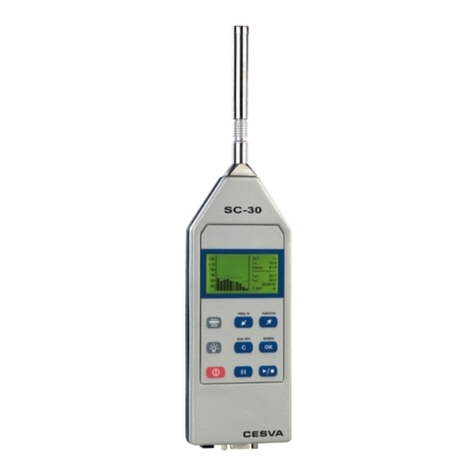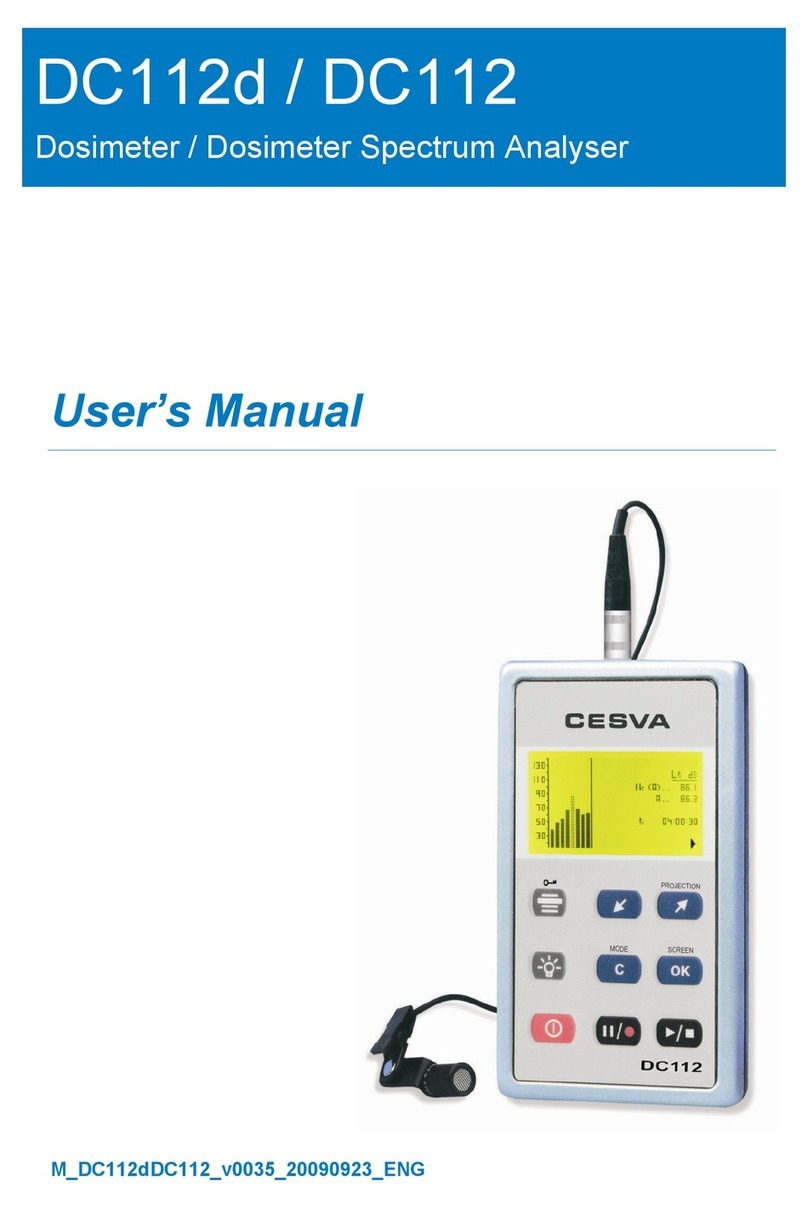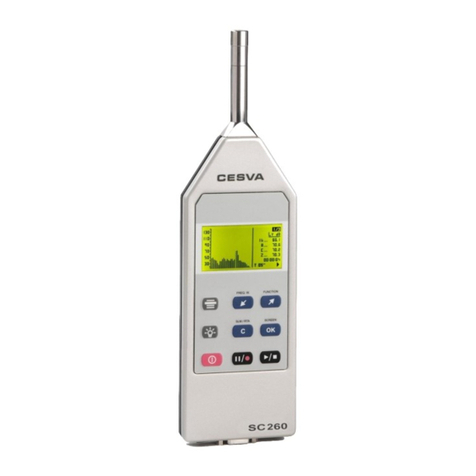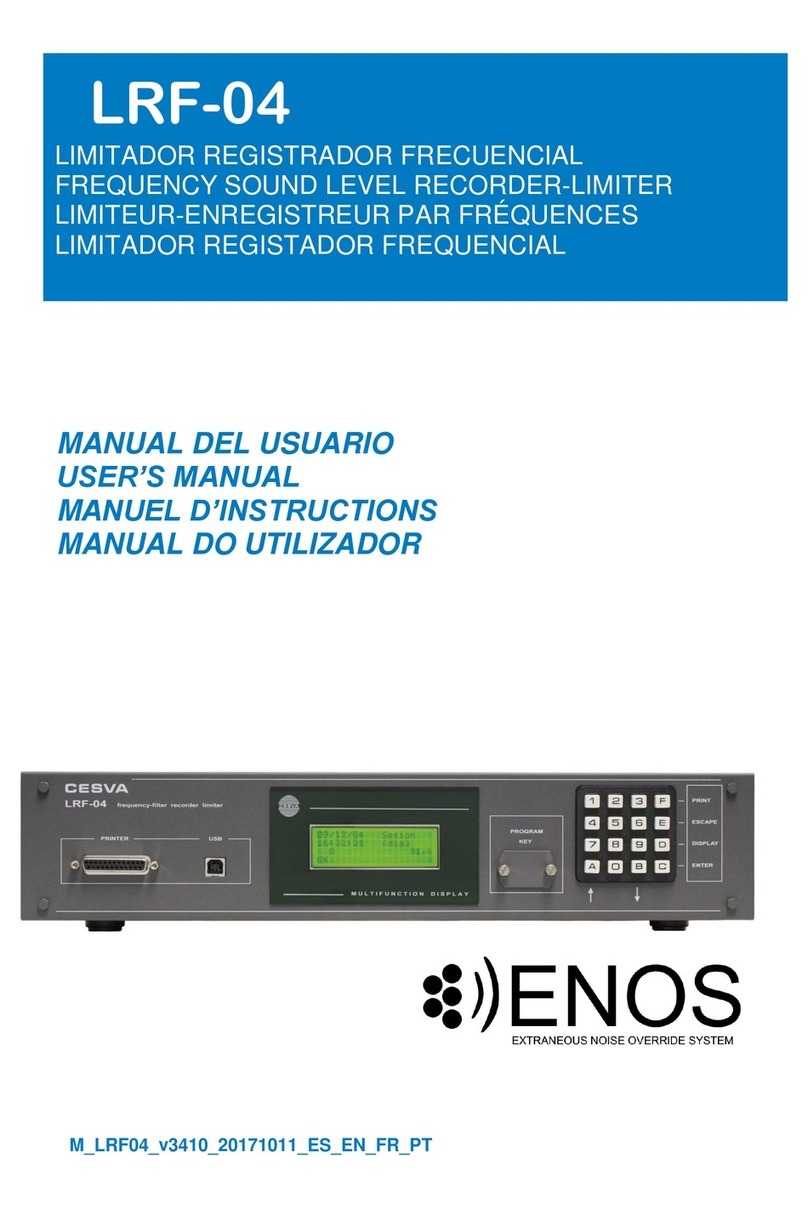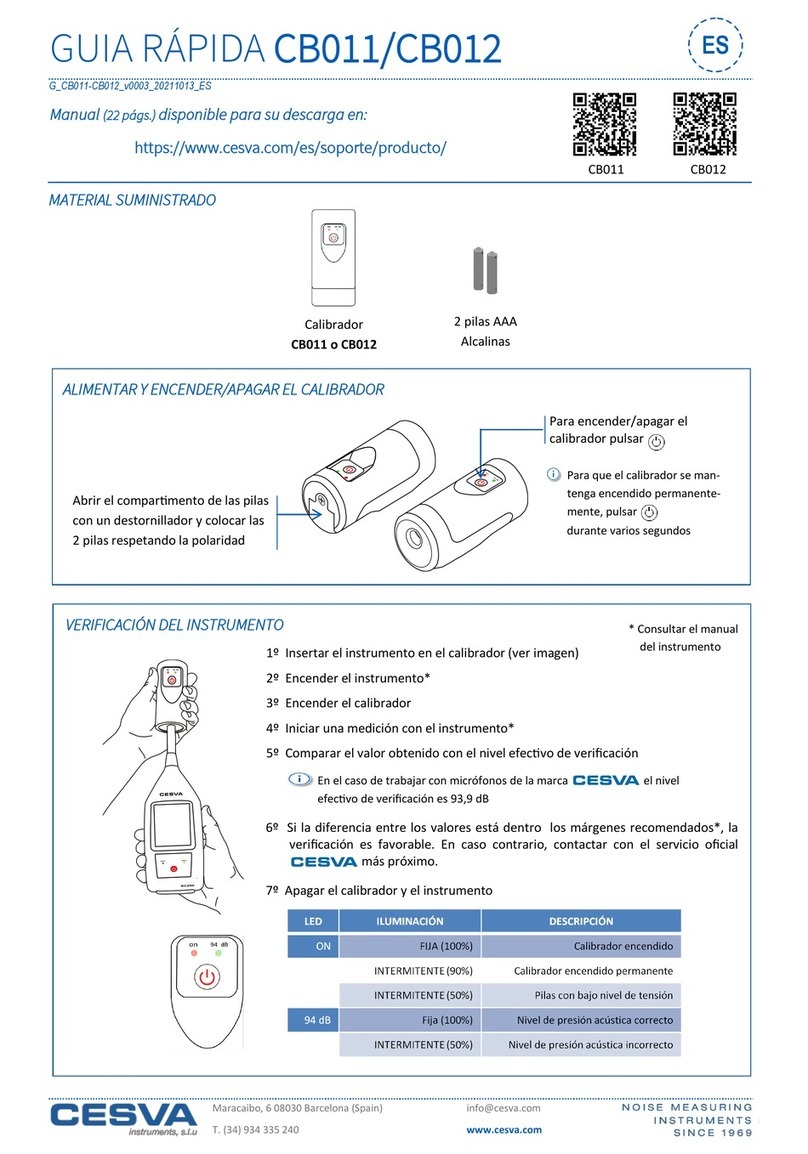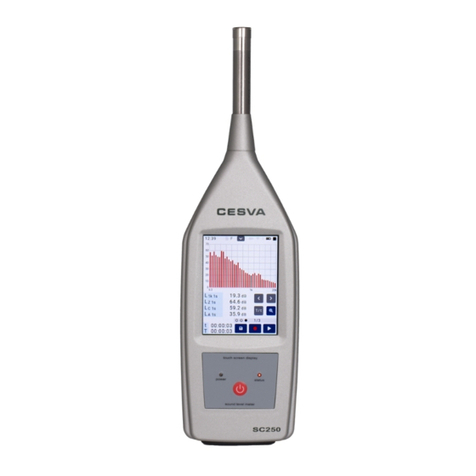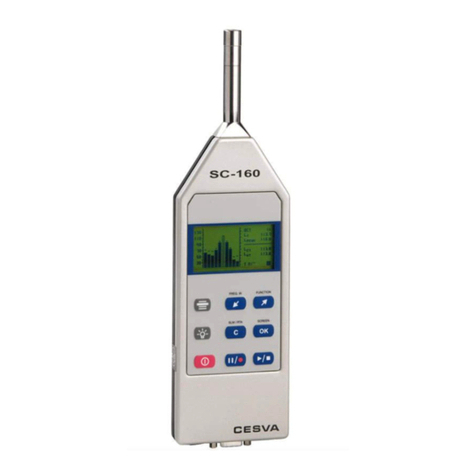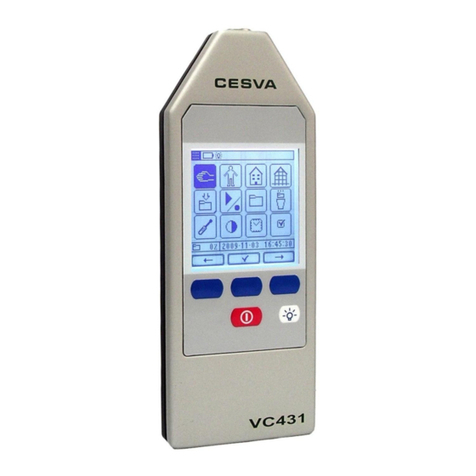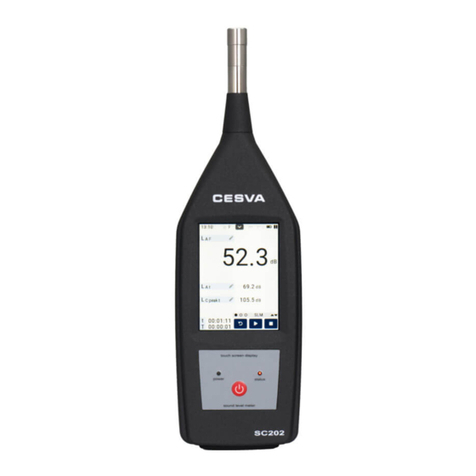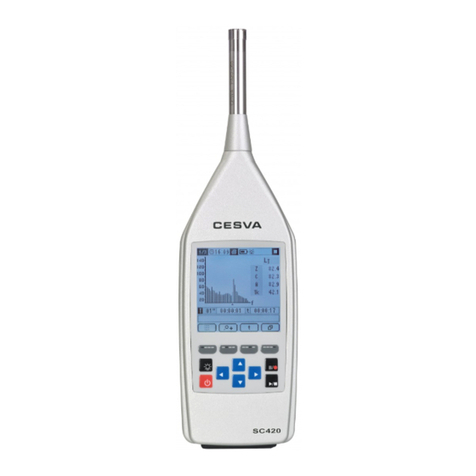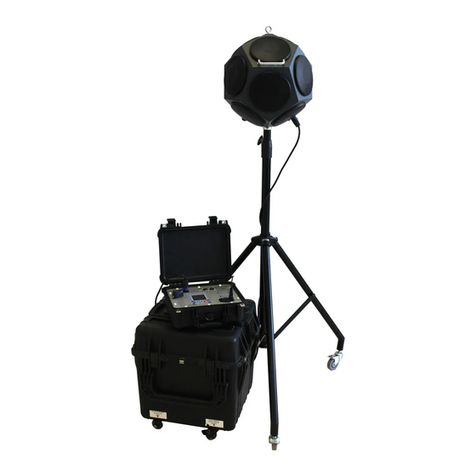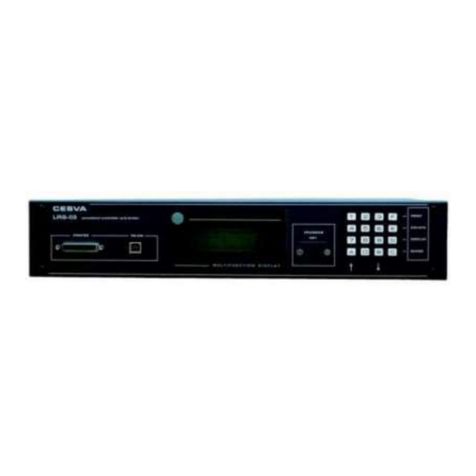
4
8.5.2 Beginning measurement.....................................................................................95
8.5.3 Functions display................................................................................................96
8.5.4 Interrupting the measurement.............................................................................98
8.5.5 Consulting measured data..................................................................................98
8.5.6 Overload indicator...............................................................................................99
8.6 Measuring in FFT Narrow Band frequency Analyser Mode ..........................................99
8.6.1 Prior adjustments: Integration time....................................................................99
8.6.2 Beginning measurement...................................................................................100
8.6.3 Functions display..............................................................................................100
8.6.4 Interrupting the measurement...........................................................................102
8.6.5 Consulting measured data................................................................................102
8.6.6 Overload indicator.............................................................................................102
8.7 Data registering...........................................................................................................102
8.7.1 Saving results ...................................................................................................103
8.7.2 Carrying out a recording ...................................................................................103
8.7.3 Time synchronisation........................................................................................104
8.7.4 Kinds of recording.............................................................................................104
8.8 Circular memory..........................................................................................................106
8.9 Viewing the register ....................................................................................................106
8.10 Technical specifications ............................................................................................107
8.10.1 Third octave band filters ...................................................................................107
8.10.2 Measurement range (one third octave spectrum analyser) ..............................108
8.10.3 Standards .........................................................................................................108
8.11 Function summary table............................................................................................109
8.11.1 1/3 Extended Spectrum analyser mode functions ............................................109
8.12 FFT narrow band frequency analyser .......................................................................110
9. APENDIX D: Dosimeter Module for the assessment of noise at workplace .............111
9.1 Dosimeter module activation.......................................................................................111
9.2 Using the keyboard for the dosimeter mode ...............................................................112
9.3 Using the SC310.........................................................................................................112
9.3.1 Switch on the SC310 ........................................................................................112
9.3.2 Accessing to the Dosimeter mode....................................................................113
9.3.3 Turn off the SC310 ...........................................................................................113
9.3.4 SC310 Menu.....................................................................................................113
9.4 Measuring in dosimeter mode.....................................................................................113
9.4.1 Prior adjustments..............................................................................................113
9.4.2 Beginning measurement...................................................................................114
9.4.3 Function display................................................................................................115
9.4.4 Interrupting the measurement...........................................................................117
9.4.5 Consulting measured data................................................................................117
9.4.6 Overload indicator.............................................................................................117
9.5 Data registering...........................................................................................................117
9.5.1 Saving final results............................................................................................117
9.5.2 Making a recording ...........................................................................................118
9.5.3 Time synchronisation........................................................................................118
9.5.4 Kinds of recording.............................................................................................119
9.6 Circular memory..........................................................................................................120
9.7 View the register .........................................................................................................120
9.8 Technical specifications. .............................................................................................121
9.8.1 Standards .........................................................................................................121
9.9 Functions definitions ...................................................................................................121
9.9.1 Daily noise exposure level................................................................................121
9.9.2 Sound exposure................................................................................................121
9.9.3 Dose .................................................................................................................121












